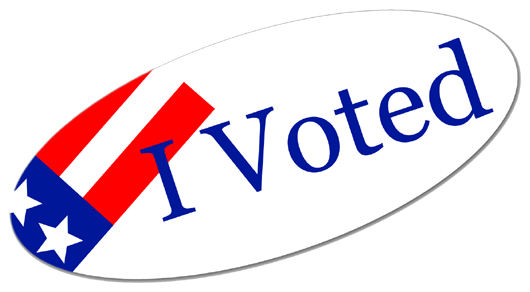Chapter Two
- In Chapter Two, we are introduced to one of the most important aspects of the Constitution- the separation of powers among the three branches of government. The chapter states that the advent of national political parties has helped bridge the seperation of powers; however, it also states that these parties may be detrimental because they can result in a undivided government in which one party controls Congress while the other controls the White House. The chapter also discusses the Supreme Court's power of judicial review which was established in the 1803 case of Marbury vs. Madison. Chapter Two also states that the Constitution is the framework of our governmental system, thus it has been modified over time to adapt to new conditions. While the Constitution is adaptable, it is sometimes necessary to alter the Constitution itself which can be achieved through amendments.
Key Terms
- Natural Law: Natural law is law that defines right from wrong and is higher than human law. Sentence: The Constitution took on the aura of natural law in the early years of the Republic.  | 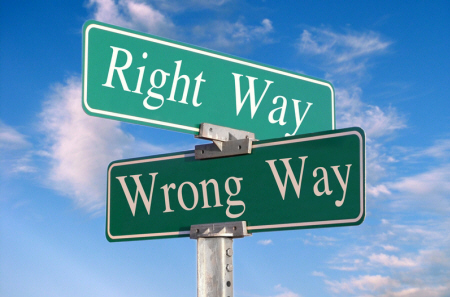 |
- Separation of Powers: The separation of powers is the distribution of powers; in the United States, the Constitution distributed power among three branches of the national government.
Sentence: The separation of powers was made to ensure that a monarchy could not be established.
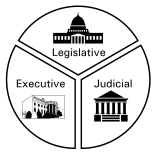 |  |
- Checks and Balances: Constitutional grant of powers that enables each of the three branches of government to check some acts of the others ad therefore ensure that no branch can dominate. Sentence: Checks and balances ensure that not one branch of government can over power the other. 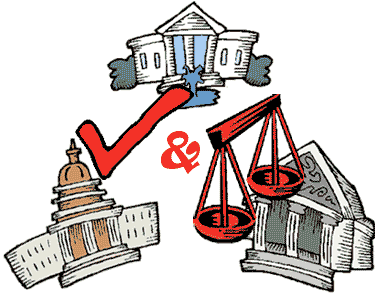 | 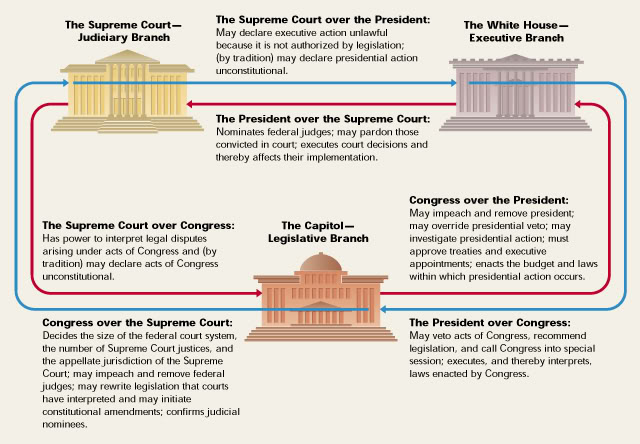 |
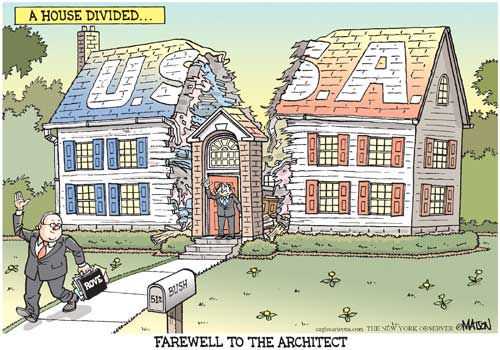 | - Divided Government: Governance divided between the parties, especially when one holds the presidency and the other controls one or both houses of Congress. Example: Executive branch is Democratic while Congress is Republican. This can be negative because cooperation may be difficult and not a lot will be accomplished. However, having both branches of government being of the same party, there is not a check to ensure one branch is being righteous. Sentence: Having a divided government can lead to issues such as getting things done.  Above Photo: Example of an Undivided Government |
Electorate: All the people in a country or area who are entitled to vote in an election. Sentence: It is not the electorate who elect the president but the electoral college. 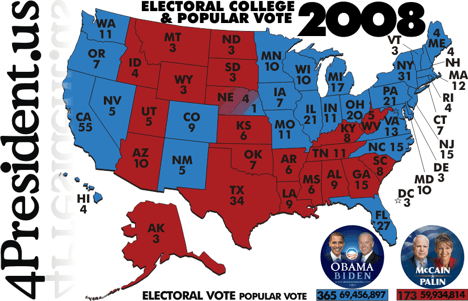 | 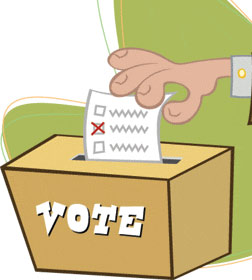 Left Photo: Electoral College Results for 2008 Election |
 Above Photo: Example of Initiative Advertisement | - Initiative: Procedure whereby a certain number of voters may, by petition, propose a law or constitutional amendment and have it submitted to the voters. Sentence: An example of an initiative is when voters propose to make casino gambling legal, so they submit it to the voters. - Referendum: Procedure for submitting to popular vote measures passed by the legislature or proposed amendments to a state constitution. Sentence: An example of a referendum is when voters decide whether or not they want an amendment to be passed in their state. - Recall: Procedure for submitting to popular vote the removal of officials from office before the end of their term. Sentence: An example of a recall election was when the state of California replaced Governor Davis with Governor Schwarzenegger.  |
Marbury v. Madison: Formed the basis for the exercise of judicial review under Article III of the Constitution. This case resulted from a petition to the Supreme Court by William Marbury, who had been appointed by President John Adams as Justice of the Peace in the District of Columbia but whose commission was not delivered. Marbury petitioned the Supreme Court to force Secretary of State James Madison to deliver the documents, but the court, with John Marshall as Chief Justice, denied Marbury's petition, holding that the part of the statute upon which he based his claim, the Judiciary Act of 1789, was unconstitutional. Marbury v. Madison was the first time the Supreme Court declared something "unconstitutional", and established the concept of judicial review in the U.S. Sentence: Marbury v. Madison was a landmark case that helped define the "checks and balances" of the American form of government. | 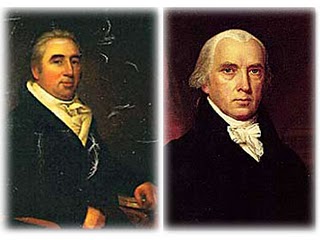 |
- Judicial Review: The power of a court to refuse to enforce a law or a government regulation that in the opinion of the judges conflicts with the U.S. Constitution or, in a state court, the state constitution. Sentence: Marbury v. Madison established the concept of judicial review. 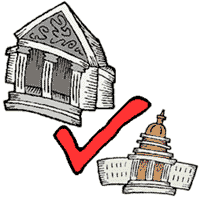 |  |
 | - Writ of Mandamus: Court order directing an official to perform a duty about which the official has no discretion, such as delivering a commission; the proper court can potentially issue a writ of mandamus even against the secretary of state Sentence: William Marbury asked the Supreme Court to issue a writ of mandamus.  |
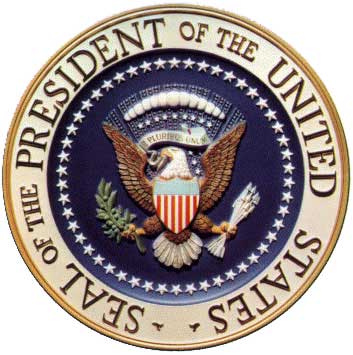 | - Executive Order: Directive issued by a president or governor; carries the full force of law Sentence: An executive order can withhold federal contracts from businesses engaging in racial discrimination. - Executive Privilege: The power to keep executive communications confidential, especially if they relate to national security Sentence: The executive privilege was made to protect national security. - Impoundment: Presidential refusal to allow an agency to spend funds authorized and appropriated by Congress Sentence: Impoundment also includes the authority to send out armed forces into hostilities.  |
Strict constructionist : Thomas Jefferson believed in a strict construction of the Constitution; that means, he believed people should follow exactly what was stated and allowed in the document. need to follow the specific rules. Loose constructionist: On the other hand, Alexander Hamilton believed in a loose construction of the Constitution; that means, he thought you could take whatever action you wanted, as long as the document did not specifically say you couldn't do it. Sentence: A loose constructionist would feel that it is acceptable to do something that is not directly forbidden. | Strict vs. Loose constructionist  |
Amendment: a change made to a written constitution Sentence: Congress has proposed only 31 amendments, of which only 27 have been ratified. | 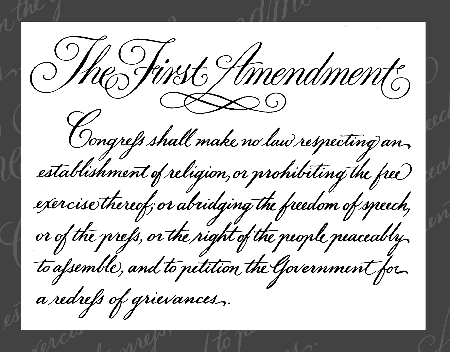 |
Equal Rights Amendment: Was first introduced in 1923 but did not get much support until the 1960s. It can be divided into 3 sections  |
Sentence: The failure of the Equal Rights Amendment to be ratified provides a vivid example of the pitfalls of ratification. |
Self Test
1. Governance divided between the parties, especially when one holds the presidency and the other controls one or both houses of Congress
A. Divided Government
B. Direct Primary
C. Writ of Mandamus
D. Executive Orders
2. The right to confidentiality of executive communications, especially those that relate to national security
A. Impoundment
B. Executive Orders
C. Executive Privilege
D. Natural Law
3. Court order directing an official to perform a duty about which the official has no discretion, such as delivering a commission
A. Recall
B. Writ of Mandamus
C. Separation of Powers
D. Checks and Balances
4. A formal accusation against a public official and the first step in removal from office
A. Divided Government
B. Initiative
C. Impeachment
D. Direct Primary
5. The power of a court to refuse to enforce a law or a government regulation that in the opinion of the judges conflicts with the U.S. Constitution or, in a state court, the state constitution
A. Judicial Review
B. Executive Order
C. Natural Law
D. Referendum
6. True or False? An executive order is a directive issued by a president or governor; carries the full force of law __
7. True or False? Natural law is presidential refusal to allow an agency to spend funds authorized and appropriated by Congress __
8. Fill in the blank: Procedure for submitting to popular vote the removal of officials from office before the end of their term is _________
9. Procedure whereby a certain number of voters may, by petition, propose a law or constitutional amendment and have it submitted to the voters is _____________
10. Presidential refusal to allow an agency to spend funds authorized and appropriated by Congress is __________
Answers: 1. A , 2. C , 3. B , 4. C , 5. A , 6. True , 7. False , 8. Recall , 9. Initiative, 10. Impoundment
Matching Definitions
|
|
